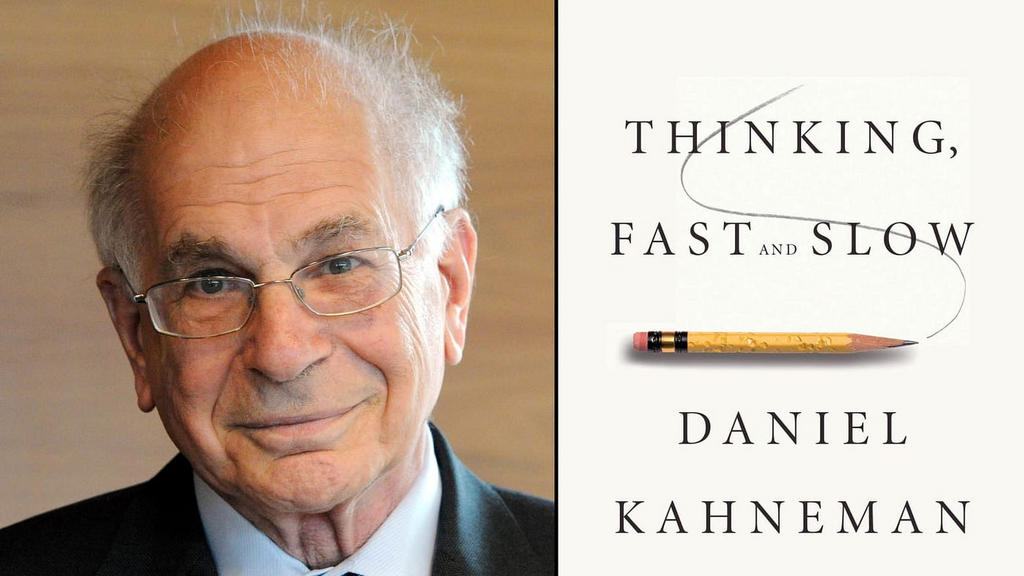Ever found yourself making a snap decision and wondering later if you really thought it through? Or maybe you’ve spent hours overthinking something trivial? Welcome to the fascinating world of decision-making that Daniel Kahneman unravels in “Thinking, Fast and Slow.” This book is a brilliant exploration into why we think the way we do, and it has some serious insights that can change how you approach everyday choices. Let’s dive into the top takeaways and why they matter.
1. We Have Two Minds (And They Don’t Always Get Along)
Kahneman introduces us to the idea of two “systems” in our brains: System 1 and System 2.
- System 1 is the fast, automatic, and emotional part of our brain. It’s what kicks in when we’re swerving to avoid a car or making snap judgments without much effort.
- System 2 is the slower, deliberate, and logical part. This is what you use when solving a math problem or carefully weighing your options.
Here’s where it gets interesting: these two systems don’t always agree. System 1 is impulsive and loves shortcuts, while System 2 is more methodical but slower. Much of our daily decision-making is dominated by System 1 because it’s just easier—and that’s not always a good thing. Knowing this can help you recognize when you need to pause and let System 2 take the wheel.
2. The Power of Cognitive Biases (And How They Trick Us)
One of Kahneman’s biggest contributions is how he highlights cognitive biases—the mental shortcuts our brains use that can often lead to mistakes.
Consider the anchoring effect, where the first piece of information we see heavily influences our decisions. For example, if you’re shopping for a coat and the first one you see is $500, you’re more likely to view a $300 coat as a bargain, even if it’s still expensive. Or the availability heuristic, where we overestimate the likelihood of events we can easily recall. This is why people might fear flying more than driving, even though driving is statistically more dangerous.
Learning about these biases is eye-opening. It shows how our “gut feelings” or “instincts” can lead us astray, and sometimes a reality check from System 2 is just what we need.
3. Loss Aversion: Why We Hate Losing More Than We Love Winning
Ever heard the saying, “Losses loom larger than gains”? Kahneman’s research shows that humans tend to experience the pain of losing more intensely than the pleasure of winning. In fact, the pain of losing $100 is often twice as powerful as the joy of gaining $100.
This phenomenon, called loss aversion, explains why we sometimes make irrational choices. For example, you might hold onto a bad investment because the pain of admitting the loss feels worse than the potential gain of moving on. Or, you might stick with a job you dislike because you fear the loss of stability, even though another position might make you happier.
Understanding loss aversion can help you make better decisions by reminding you that the fear of loss shouldn’t always be the loudest voice in the room.
4. The Halo Effect: How First Impressions Shape Everything
The halo effect is a mental shortcut where our overall impression of a person, brand, or situation influences our opinions about their specific traits. If someone is friendly and likable, for instance, we might automatically assume they’re also competent, even if we have no evidence to support that belief.
The halo effect can be useful (it saves time!), but it’s also misleading. It’s why we might hire someone based on their charm alone or why we assume that because a product looks good, it must work well. By recognizing the halo effect, you can make a conscious effort to go beyond first impressions and dig a little deeper before making important decisions.
5. The Planning Fallacy: Why We’re (Almost) Always Too Optimistic
Ever planned a project and thought, “This will only take a couple of hours!” only to find yourself days behind schedule? Kahneman explains this as the planning fallacy, our tendency to underestimate how long tasks will take or how complex they’ll be. We’re wired to be optimistic about our abilities and timelines, which can lead to unrealistic expectations and last-minute stress.
Understanding the planning fallacy can help you become a better planner by accounting for potential setbacks. Instead of setting yourself up for frustration, add some buffer time to your plans. Realistic timelines mean less stress and a better chance of meeting your goals.
Applying Kahneman’s Insights in Daily Life
What makes “Thinking, Fast and Slow” such a powerful read is how applicable these insights are to our everyday lives. Kahneman doesn’t just expose the inner workings of our minds—he gives us tools to improve our thinking.
Here’s how you can apply these takeaways starting now:
- Slow down for important decisions: When something truly matters, give System 2 the time it needs to process. Avoid letting System 1’s snap judgments make the final call.
- Be aware of biases: Start noticing when you’re falling into patterns like anchoring, availability heuristics, or the halo effect. The more aware you are, the better equipped you’ll be to sidestep these mental traps.
- Plan with realism: Remember the planning fallacy, and add some extra time to your goals. You’ll thank yourself later.
- Balance gains and losses: Don’t let the fear of loss hold you back from taking calculated risks or making decisions that could benefit you in the long run.
In the end, Kahneman’s book is a powerful reminder that our minds are incredibly complex, but understanding how they work gives us a big advantage. By being more intentional with our thinking, we can make better decisions, avoid common traps, and maybe even outsmart our own brains.
So, the next time you catch yourself jumping to a conclusion, remember Kahneman’s insights—and give yourself a little extra time to think.
* Cover image by [OscarDillion] link used under [CC BY-SA 4.0]
